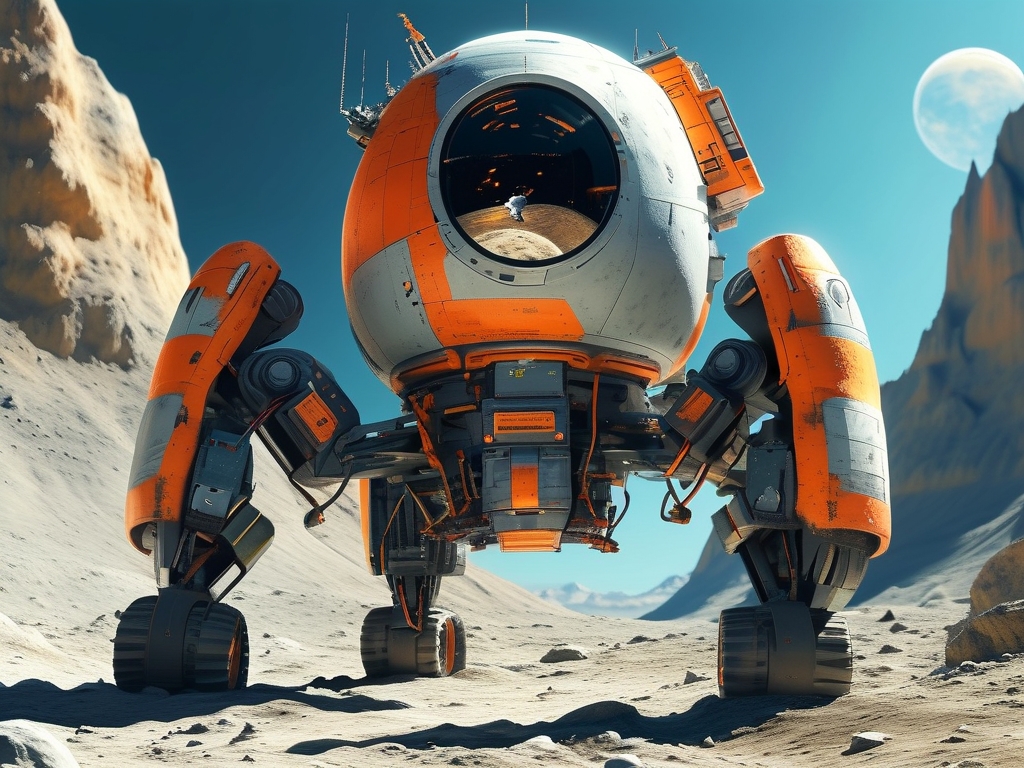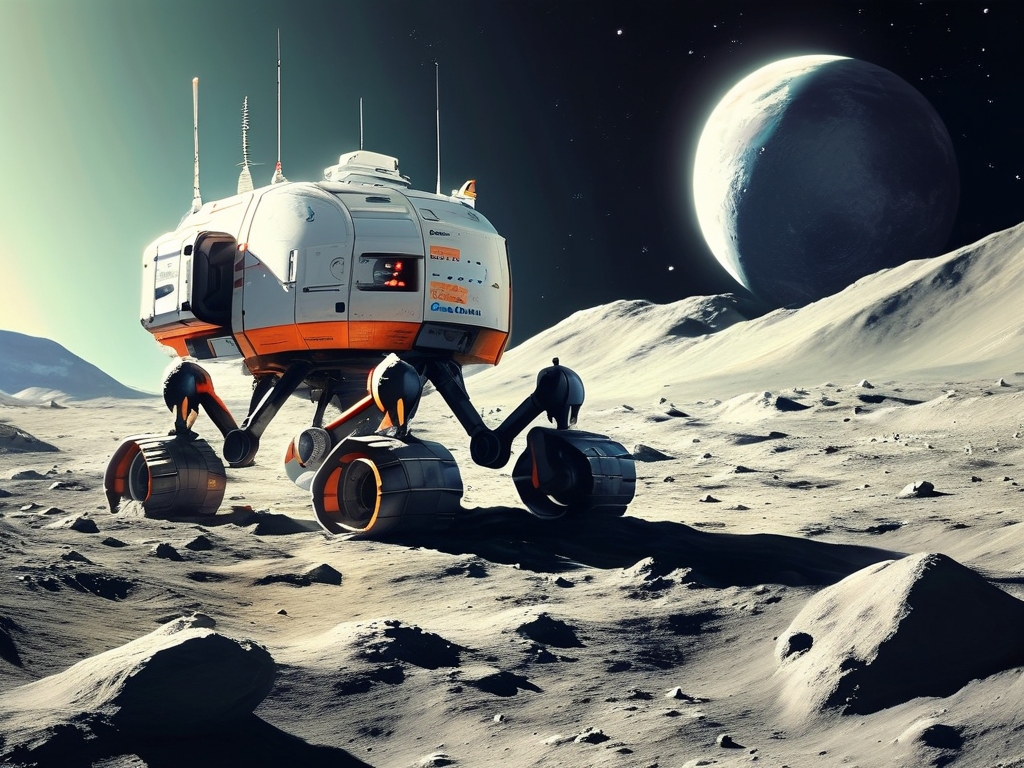The dawn of the 21st century has witnessed an unprecedented surge in lunar exploration, driven by advancements in robotic technology that are redefining humanity's relationship with Earth's celestial companion. As nations and private entities race to establish a sustainable presence on the Moon, robotic systems have emerged as indispensable tools for scientific discovery, resource utilization, and infrastructure development. This article explores the cutting-edge innovations in lunar robotics, their operational challenges, and their transformative potential for future space exploration.

The Evolution of Lunar Robotics
Modern lunar robots represent a quantum leap from the rudimentary systems deployed during the Apollo era. Today's generation of exploration robots integrates artificial intelligence, advanced mobility systems, and multi-spectral sensing capabilities. For instance, NASA's Volatiles Investigating Polar Exploration Rover (VIPER), scheduled for a 2024 launch, employs machine learning algorithms to autonomously navigate permanently shadowed craters while analyzing water ice deposits. Similarly, China's Yutu-2 rover has demonstrated exceptional longevity in the harsh lunar environment, operating for over 50 lunar days since its 2019 landing – a testament to breakthroughs in radiation-hardened electronics and thermal regulation systems.
Recent developments highlight three key technological frontiers:
- Adaptive Mobility Systems: Engineers are moving beyond traditional wheeled designs to hybrid locomotion systems. The European Space Agency's "Lunar Zebro" prototype features six independently rotating wheels with insect-inspired kinematics, enabling it to climb over 20 cm obstacles – critical for traversing the Moon's rugged terrain.
- Self-Healing Materials: MIT researchers have developed polyurethane-based skins that automatically repair micrometeroid punctures using embedded liquid resin reservoirs, addressing one of the most persistent threats to lunar equipment.
- Swarm Robotics: Projects like DARPA's "Moon Diver" envision cooperative teams of small robots working in synchrony, with one bot rappelling into lava tubes while others provide power and data relay.
Technical Challenges in Lunar Robotics
Operating robots on the Moon presents extraordinary engineering hurdles. The combination of extreme temperature fluctuations (-173°C to 127°C), abrasive regolith dust, and prolonged radiation exposure requires novel solutions:
-
Dust Mitigation: Lunar regolith particles, sharper than terrestrial sand due to the absence of weathering, pose catastrophic risks to mechanical joints and optical sensors. NASA's Kennedy Space Center has pioneered electrostatic curtain technology that repels dust using alternating electric fields, reducing contamination by 85% in prototype tests.
-
Energy Management: With lunar nights lasting 14 Earth days, robots must balance solar power harvesting with extreme energy conservation. The Japan Aerospace Exploration Agency (JAXA) recently tested a radioisotope heater system that maintains critical systems at -40°C during nighttime operations without requiring active power input.
-
Communication Latency: The 2.5-second signal delay between Earth and Moon necessitates advanced autonomy. Lockheed Martin's "MAPP" (Multi-agent Autonomous Planning Platform) enables robots to replan missions in real-time when encountering unexpected obstacles, reducing human intervention by 70%.
Scientific and Economic Applications
Lunar robots are unlocking transformative opportunities:
1. Helium-3 Harvesting The Moon's surface contains an estimated 1.1 million metric tons of helium-3 isotope – a potential fuel for nuclear fusion reactors. Robots like China's planned "Chang'e-8" mining system use laser-induced breakdown spectroscopy to map concentrations while testing regolith processing techniques that could yield 0.03 grams of helium-3 per ton of processed soil.
2. Construction Automation NASA's Artemis program aims to deploy robot teams for building landing pads and habitats. The "Olympus" project by ICON uses 3D printing robots that sinter lunar soil into durable structures at 1.2 meters per hour. Meanwhile, GM and NASA's "ATHLETE" rover can lift 450 kg payloads with millimeter-level precision using its six articulated legs.
3. Astronomical Infrastructure The far side of the Moon offers unparalleled conditions for radio astronomy. Robots are being developed to deploy and maintain ultra-low-frequency antenna arrays in this radio-quiet zone. The Netherlands-Chinese "NCLE" project has already demonstrated a prototype antenna deployed by the Chang'e-4 rover.
International Collaboration and Policy Frameworks
The global race for lunar robotics has spurred both competition and cooperation. The Artemis Accords, signed by 34 nations as of 2024, establish guidelines for robotic operations, including:
- Shared standards for navigation and communication systems
- Protocols for preserving historic landing sites
- Open data policies for scientific discoveries
Notable joint ventures include:
- The India-Israel "SARAL" mission developing AI-powered drill robots
- Russia's Luna-27 partnering with ESA to test autonomous drilling in the South Pole-Aitken Basin
Future Prospects
Industry analysts project the lunar robotics market will reach $3.8 billion by 2030. Emerging technologies set to dominate include:

- Quantum inertial sensors enabling precise navigation without GPS
- Biomimetic robots modeled on desert animals for efficient locomotion
- Self-replicating systems using in-situ resources to manufacture spare parts
As humanity stands on the brink of establishing a permanent lunar presence, robotic systems are proving to be more than mere tools – they are evolving into autonomous partners capable of surviving and thriving where humans cannot. The lessons learned from these mechanical pioneers will not only shape our future on the Moon but also pave the way for the eventual robotic exploration of Mars and beyond.









